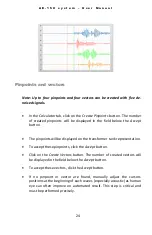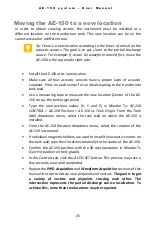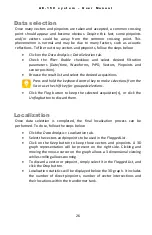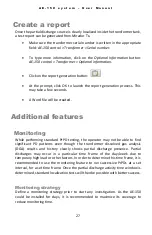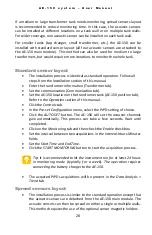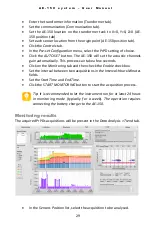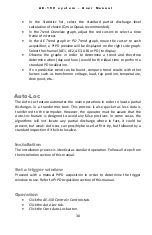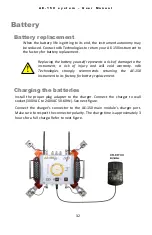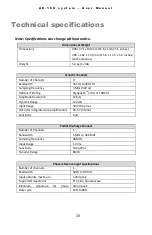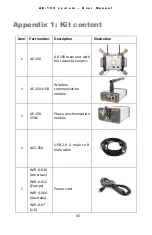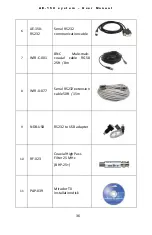
A E - 1 5 0 s y s t e m – U s e r M a n u a l
31
Several operations will be automatically performed, the current process being
displayed in the Auto-Loc section. The internal process and data transfer
progression can be seen from the progress bar.
The Auto-Loc’s algorithms will react according to the results obtained, and guide
the user to take appropriate actions when necessary. Here are three possible
scenarios:
Scenario 1: Pinpoint Success
If the Auto-Loc function manages to bring out appropriate signals, it will use the
same parameters and repeat the same operation set to localize the source. The
source localization and overall estimates will be displayed in the 3D Localization
Graph found under the Localization tab, in the Data Analysis panel.
The user can interrupt the process at any moment without losing the gathered
localization data.
Scenario 2: Partial Solutions: Device move required to confirm
As in scenario 1, if the Auto-Loc function manages to bring out appropriate
signals, it will use the same parameters and repeat the same operation set to
localize the source. Dotted lines will be displayed in the 3D Localization Graph,
representing the localization vector solutions found so far. These possible
solutions will be related to those obtained from the next or previous device
positions on the tank, and intersections will indicate the exact source location.
The user can interrupt this process at any moment without losing the gathered
localization data.
Scenario 3: Device move required
When the Auto-Loc function has spent all its signal manipulation techniques
without success, a message prompt will warn the user. If available, an indication
of the general direction of a potential source will be given. Follow the
instructions and go to the next Step.
Repeat the preceding steps until a satisfying localization estimate have been
determined or the whole tank has been inspected.








